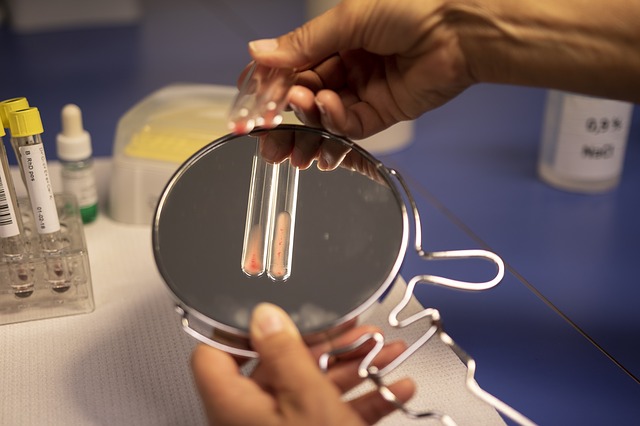Combining the basic principles of radioimmunoassay, high sensitivity chemiluminescence and high specificity immunoassay, a new technique - chemiluminescence immunoassay, CLIA - emerged in 1977.

Chemiluminescence immunoassay provides the best solution for quantifying samples from complex mixtures. Since chemiluminescence immunoassay is no longer radioactive and has a greater safety profile, it is widely used for the diagnosis of tumor markers, infectious diseases, cardiac markers, etc. CLIA has seen a rapid growth in chemiluminescence immunoassays in the global
IVD industry.
Chemiluminescence, with its high sensitivity, high specificity, fast detection, fully automated analysis system, wider dynamic range, simplified procedures and no need for special instruments, is present in every corner of the medical industry.
Chemiluminescence Examples - Practical Applications of Chemiluminescence
1. Pharmaceutical industry
Chemiluminescence technology is widely used in the pharmaceutical industry to screen biological compounds for contamination and to check for impurities in drugs. In addition, the technology is used to measure hormone levels and to detect a wide range of drugs and their metabolites in body fluids.
2. Forensic science
Chemiluminescence is commonly used to examine crime scenes for blood residue. In many crime scenarios, blood residue may not be visible to the naked eye because the offender has cleaned the crime scene. But scientists can use the luminol reaction to locate blood traces that cannot be observed by the naked eye. Luminescence can occur when blood catalyzes the oxidation of luminol in the presence of hydrogen peroxide.
3. chemiluminescence immunoassay in cancer diagnosis
Cancer is one of the leading causes of death. There are many types of cancer, and most cancers that cause death are due to delays in diagnosis. When cancer progresses to an advanced stage, existing treatments are not effective, therefore, most research is directed to the early identification of cancer so that the cure rate of cancer can be improved.
The latest technology of chemiluminescence is currently being applied in the field of oncology to help diagnose cancer. Also the technique is being used to check for healing. Chemiluminescence can identify a wide range of cancer markers in body fluids and tissues at a very early stage, thus providing patients with the opportunity for early detection and treatment. Another contribution of chemiluminescence in tumor therapy is the possibility of using chemiluminescence to detect reactive oxygen species thereby enabling dose detection for photodynamic tumor therapy.
4. Applications in clinical medicine
In clinical laboratories, the current mainstream chemiluminescence techniques include enzymatic chemiluminescence, such as the horseradish peroxidase system, alkaline phosphatase system and xanthine oxidase system, direct chemiluminescence and electrochemiluminescence.
Chemiluminescence analysis can be used to diagnose thyroid, reproductive, metabolic diseases, anemia, cardiac diseases, inflammatory factors and other items. Today, chemiluminescence is widely used for protein blotting, immunoassays, pharmacology and toxicology tests. In addition, the technology is also used to detect trace gases such as nitric oxide and sulfur , and can also be used to accurately detect sulfur compounds, hydrogen arsenide and ozone in the environment.
Summary
Chemiluminescence is one of the most important segments of the in vitro diagnostics industry. Traditional enzyme-linked immunoassay technology cannot meet clinical needs, and with the development of chemiluminescence products and decreasing product costs, chemiluminescence technology can more easily replace traditional methods. After years of development, chemiluminescence has attracted a large number of in vitro diagnostic companies to cultivate and develop in this field with its own advantages.
And with the diversification of in vitro diagnostic technology and products, chemiluminescence is gradually emerging in the field of
POCT (Point-of-care testing ) . At present, there are some POCT chemiluminescent medical devices successfully applied in the market. Chemiluminescence diagnostic equipment has developed in the direction of automation, information technology, high throughput and high speed integration.



